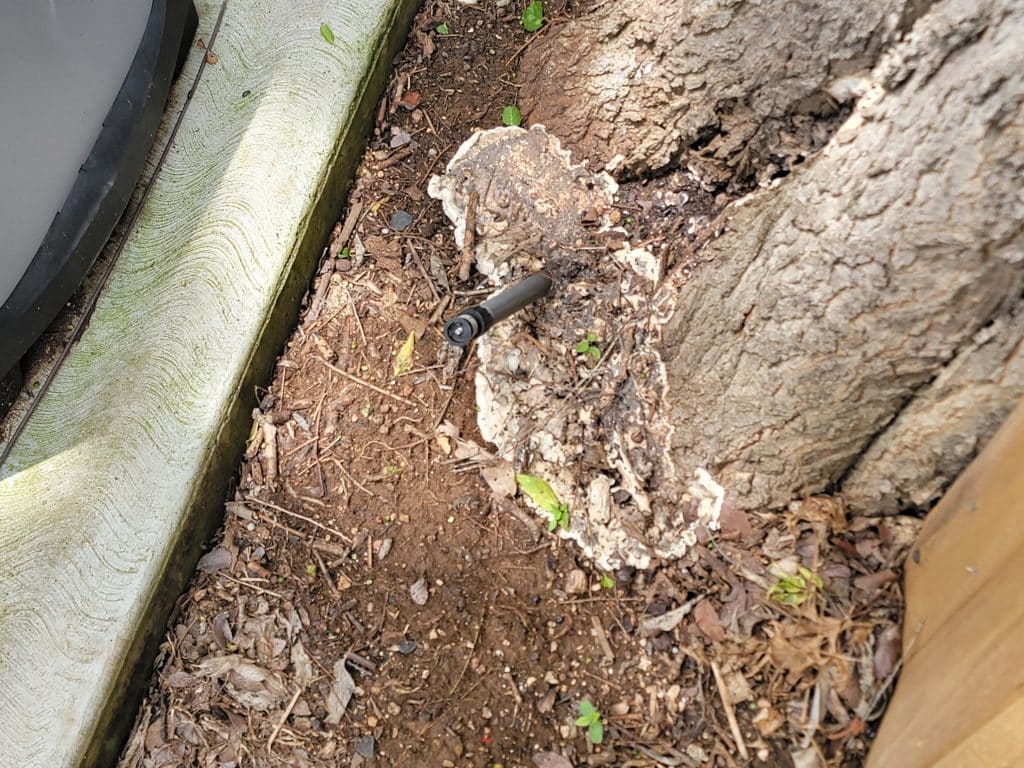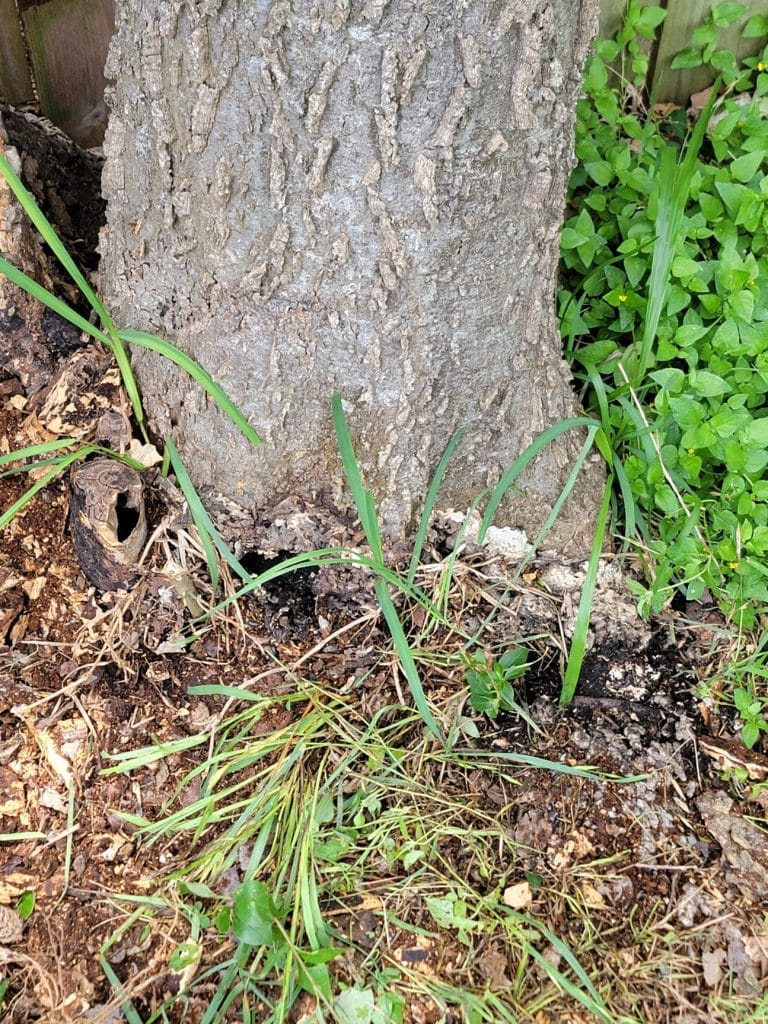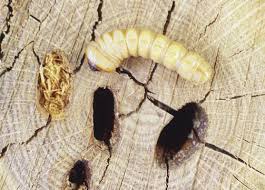Brittle Cinder
One of the most unfortunate pathogens that we find on our client’s properties is known as Kretzchmaria duesta (aka Brittle Cinder, aka Charcoal Butt Rot)

Brittle Cinder is a fungal decay pathogen that severely affects trees. In our area, it tends to primarily appear on Hackberry trees, but can be found on hardwood trees such as oak, elm, and ash. It can cause a variety of symptoms, including dieback of the branches, yellowing or wilting of the leaves, and the production of a large number of fruiting bodies on the trunk and branches.

One of the most distinctive features of Kretzschmaria deusta is the production of a large number of fruiting bodies on the tree. These fruiting bodies are small, white or black, and cinder-like, and they give the fungus its common name of Brittle Cinder. The presence of these fruiting bodies is a good indication that the tree is infected with Kretzschmaria deusta.
Kretzschmaria deusta is often spread through the movement of infected wood, such as firewood or logs. It can also be spread by wind, rain, and insects. Once a tree is infected with Kretzschmaria deusta, it is difficult to control, and the fungus can continue to spread throughout the tree, eventually leading to its death.
We come across many Hackberry trees every year infected with this fungus. It is always very sad to find, as it usually means the tree needs to be removed. Many times, the Hackberry tree will have a fully healthy canopy, but the root system and base of the tree will be rotting away. Eventually, almost every Hackberry infected with this pathogen will fall over.

If you suspect that your tree may be infected with Kretzschmaria deusta, it is important to contact us right away so that we can assess the situation and ensure that your tree is not a hazard to you or your property.
Author: Andrew Anstrom
Board Certified Master Arborist





